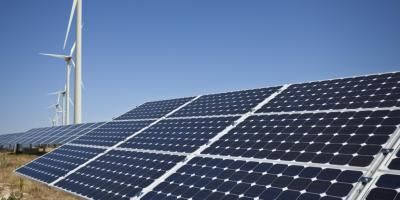Domestic Renewable Heat Incentive closes: What's next for clean heat?
- Philippa Pickford
- Director of Delivery and Schemes
- Publication type:
- Blog
- Publication date:
What we have achieved
When the Domestic Renewable Heat Incentive (DRHI) scheme was launched in 2014, it was the first domestic scheme of its kind to support renewable heat generation for households. The scheme has grown since 2014, reaching 50,000 installations accredited during 2016, and the milestone of 100,000 accredited installations in February 2022. Now that the DRHI scheme has closed to new applicants we reflect on what this innovative scheme has achieved and as decarbonising heat plays a key role in the UK’s 2050 net-zero target, we’ll look at what comes next.
The DRHI scheme was designed with decarbonisation at its core to support domestic consumers and organisations by providing a financial incentive to renewable heat generators for four eligible technologies (air source and ground source heat pumps, biomass and solar thermal). To date, DRHI has supported the installation of 110,281 renewable heating systems across Great Britain. Since scheme launch in 2014, a staggering 7.04TWh of clean heat is estimated to have been generated - enough for 2.5 billion hot baths. For 2021-22 alone it is 1.20TWh or 440 million hot baths![i]
Subsequently, the scheme has supported an exciting and expanding landscape of innovative technologies and markets and has proven that we can build a more sustainable and secure energy system.
The DRHI scheme has contributed towards significant carbon savings, supporting the UK’s approach to tackling climate change and helped us towards reaching our targets for net zero.
The deployment of a range of low carbon heating technologies across the scheme has helped to diversify our heating supply away from systems dependant on fossil fuel and has helped towards improving the performance of existing and emerging technologies by supporting growing supply chains.
Over the last 8 years we have paid £819.3m to our members. We’ve also worked alongside government to ensure that DRHI regulations and changes have been implemented robustly, helping to decarbonise the energy required to produce heat.
Our scheme members
For those who are active in the scheme, the journey doesn’t stop here. Members will continue to receive support payments for up to 7 years if they continue to follow the scheme rules. Over this time, we’ll continue to monitor compliance.
What’s next; the future of low carbon heat
The energy sector is undergoing a rapid transformation as it transitions to net zero. Whilst the DRHI scheme has made a substantial contribution to the UK’s low carbon heat generation there is still great determination to ensure the UK continues to drive down emissions. Our energy system needs ongoing investment to support these aspirations and sustained growth.
As the administrator for several environmental schemes on behalf of government, we are proud to support two new schemes;
1. The Green Gas Support Scheme
The Green Gas Support Scheme is intended to increase the proportion of green gas in the grid, decarbonising our gas supply and continuing the transition to net zero. The scheme successfully launched in November 2021.
2. The Boiler Upgrade Scheme
The Boiler Upgrade Scheme (BUS) will provide grants to encourage property owners in England and Wales to install low carbon heating systems such as heat pumps and in limited circumstances biomass systems, replacing high carbon fossil fuel heating. Eligible systems that are commissioned on or after 1 April 2022 will be entitles to support. From 11 April 2022 , installers will be able to open an account and from 23 May 2022 the scheme will be open for grant applications.
Ofgem will continue to work closely with government and wider industry to ensure the next chapter in low carbon heat benefits the wider market, the environment and makes a positive difference for energy consumers.
[i] This assumes 90 litres of water is used which is heated from 14 to 40 degrees C.
